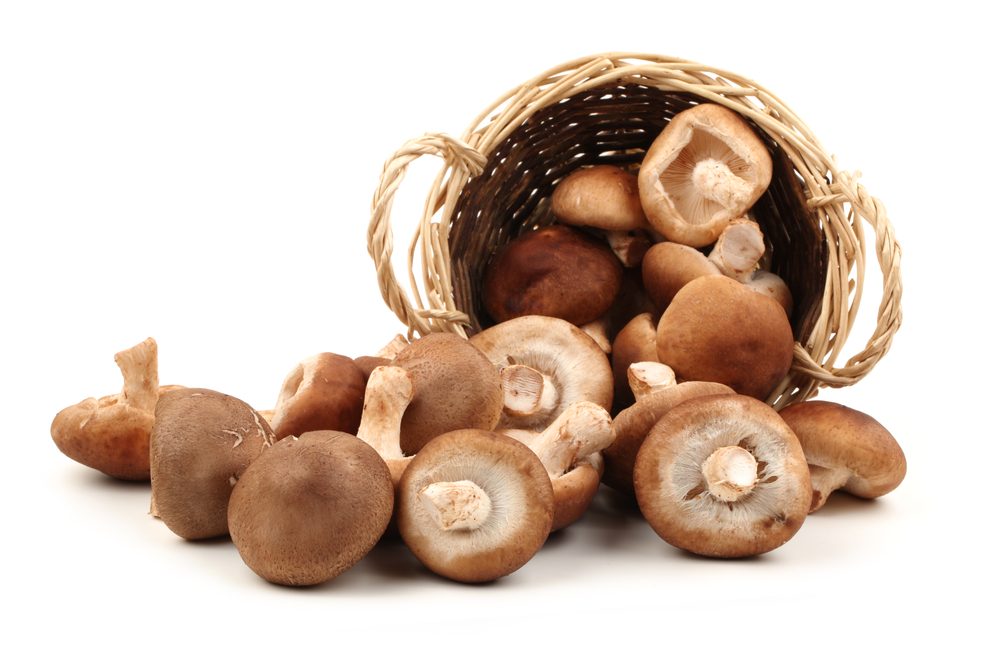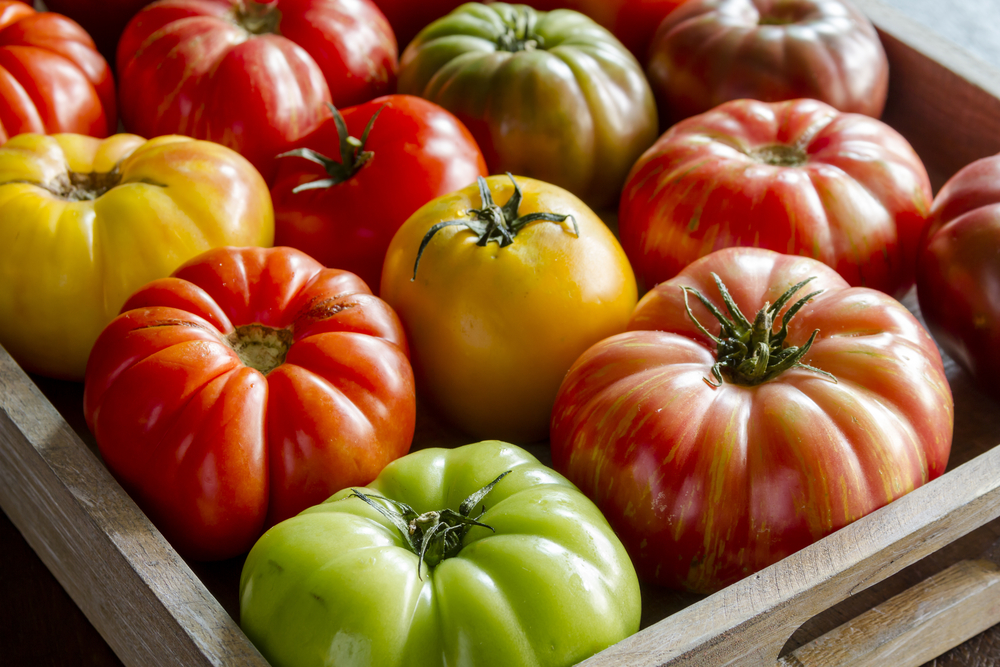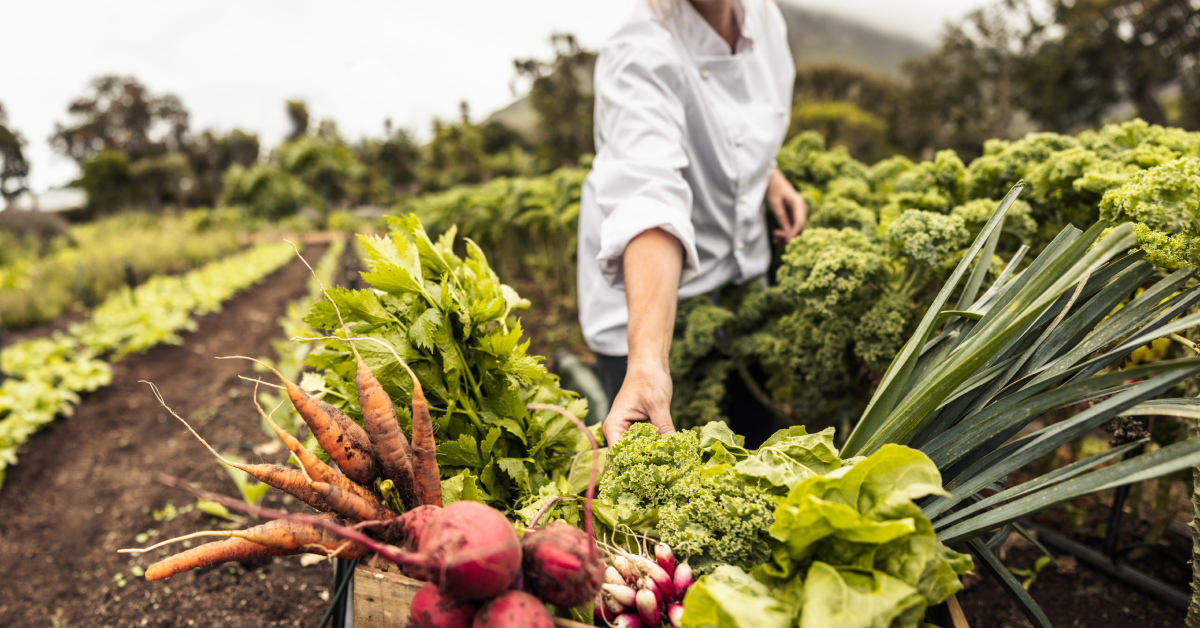Did you know that even a small farm can profit significantly by focusing on suitable crops? You can turn your land into a thriving agricultural business with careful planning and the right choices. This article is here to help you identify those high-value crops!
We’ll explore 10 of the most profitable crops for small farmers, from well-known favorites to exciting new possibilities. From ginger to goji berries, kiwis to shiitake mushrooms, this list offers a variety of choices to suit your climate, resources, and market.
So, discover the most profitable crops to turn your small farm into a big success story!
Understanding Small Farm Profitability
Before we delve into the specific most profitable crops, let’s explore the key factors influencing profitability on a small farm. Understanding these factors will empower you to choose which most profitable crops to include in your plan.
Factors Influencing Profitability
- Market Demand: Researching what high value crops are in demand locally and regionally is crucial. High demand often translates to better prices for your harvest. Consider factors like consumer trends, restaurants in your area, and the potential for selling directly to customers through farmers’ markets or community-supported agriculture (CSA) programs.
- Growing Conditions: Matching your crops to your climate and soil conditions is essential. Some crops thrive in specific temperatures, sunlight levels, and soil types. Analyzing your land’s characteristics and researching suitable crops will help avoid costly growing challenges.
- Initial Investment vs. Long-Term Gains: Certain crops require a higher initial investment for seeds, specialized equipment, or infrastructure. Weigh these upfront costs against the potential long-term gains in yield and profitability. For example, perennial crops require more initial investment but can provide harvests for years.
- Labor and Resource Requirements: Consider the ongoing labor and resources needed to cultivate each crop. Some of the most profitable crops are more labor-intensive than others, and some may require specific irrigation systems or pest control measures. Understanding these needs will help determine if a crop aligns with your available resources and workforce. Use of a dedicated software for crop management enables seamless growth.
Importance of Diversification
While focusing on a single high-demand crop might seem appealing, diversifying your plantings can be a powerful strategy for small farms. Here’s why:
- Benefits of Growing Multiple Crops: Planting various most profitable crops can extend your harvest season, allowing you to generate income throughout the year. Additionally, interplanting compatible crops can improve soil health and potentially deter pests.
- Risk Management Through Crop Diversity: Weather events, pests, or diseases can devastate a crop. By diversifying, you spread out your risk. If one crop is affected, the others can still provide income.
Criteria for Selecting the Most Profitable Crops for Your Small Farm
Now that we understand the key factors influencing small farm profitability, let’s delve deeper into the criteria for selecting the most profitable crops to maximize your success.
1. Climate and Soil Suitability
The first step is to ensure your chosen crops thrive in your local climate and soil conditions. Ignoring this crucial aspect can lead to stunted growth, low yields, and reduced profits. Here’s how to make an informed decision:
- Research Your Climate: Understand your average temperatures, rainfall patterns, and frost dates. The USDA Plant Hardiness Zone Map is valuable for identifying zones with specific temperature ranges.
- Test Your Soil: Conduct a simple soil test to determine your land’s pH level and nutrient composition. Many local extension offices offer affordable soil testing services.
- Research Crop Requirements: Match your findings to the specific needs of potential crops. Many online resources and seed catalogs provide detailed information about a plant’s ideal growing conditions.
2. Market Research
Before investing time and resources into a specific crop, it’s crucial to understand the market demand in your area. Here’s how to conduct effective market research:
- Identify Potential Buyers: Explore local farmers markets, restaurants known for using fresh produce, and grocery stores. Talk to vendors and chefs to understand what the most profitable crops are in high demand and what prices they fetch.
- Research Consumer Trends: Stay informed about current consumer preferences for local and organic produce. Consider specialty crops or heirloom varieties that fetch premium prices in your area.
- Analyze Regional Demand: Look beyond your immediate location. If you can produce high volumes of a particular crop, explore opportunities to sell to regional distributors or wholesalers.
3. Cost-Benefit Analysis
Not all high-demand crops translate to high profits for your specific farm. Here’s how to conduct a cost-benefit analysis to ensure your chosen most profitable crops are financially viable:
- Calculate Startup Costs: Factor in the cost of seeds or seedlings, necessary equipment (like trellises or irrigation systems), and potential infrastructure needs (like greenhouses for certain crops and greenhouse management software for it’s management).
- Estimate Ongoing Expenses: Consider labor costs for planting, weeding, harvesting, and any required pest control measures. Factor in water usage and any fertilizer or soil amendments needed. A crop harvest management software helps you keep track of your crops to track the on going expenses hassle free.
- Research Potential Revenue: Based on your market research, estimate the potential selling price per crop unit (e.g., per pound, bunch, or basket). Consider the expected yield per plant or acre to get a realistic picture of potential revenue.
Top 10 Most Profitable Small Farm Crops
Even a small farm can blossom into a big profit center! Discover the top 10 most profitable crops you can cultivate that suit your climate, resources, and market so you can find the perfect crops to watch your small farm flourish:
1. Gourmet Mushrooms (Oyster and Shiitake)

Why Profitable: These gourmet varieties are the most profitable crare prized by chefs and home cooks, fetching premium prices at restaurants and farmers’ markets. Plus, they require minimal space and can be grown indoors, making them ideal for small farms.
Growing Tips: Mushrooms thrive in relaxed, humid environments with low light. You can grow them on logs, straw bales, or specialized bags. Depending on the variety, harvest can happen within a few weeks to several months.
2. Microgreens

Why Profitable: These tiny vegetable and herb seedlings are packed with nutrients and flavor, commanding high prices at restaurants and grocery stores. Their quick growth cycle (typically 7-14 days) allows for multiple harvests per year in a small space.
Growing Tips: Various vegetables and herbs can be grown as microgreens. They require shallow trays, a well-lit area (grow lights can be used indoors), and a consistent moisture level. Harvesting involves simply snipping the greens just above the soil line.
3. Heirloom Tomatoes

Why Profitable: Heirloom tomatoes are the most profitable crops because they offer unique flavors and stunning varieties, attracting consumers to pay a premium for these unique fruits.
Growing Tips: Heirloom tomatoes generally require care similar to standard tomatoes. However, some varieties might be more susceptible to disease. Proper staking, watering, and organic pest control methods are essential.
4. Garlic

Why Profitable: Garlic is low-maintenance yet one of the most profitable crops. Its long shelf life makes it a popular choice for small farms. It’s also in high demand by home cooks and restaurants alike.
Growing Tips: Garlic thrives in loose, well-draining soil. Planting typically happens in the fall for a summer harvest. Proper spacing and weed control are essential.
5. Specialty Herbs (Basil, Mint, Cilantro)

Why Profitable: Fresh culinary and medicinal herbs consistently fetch premium prices at farmers’ markets and restaurants. Due to their widespread use, Basil, mint, and cilantro are popular choices.
Growing Tips: Most herbs prefer well-drained soil and plenty of sunlight. Some herbs, like basil, benefit from warm temperatures. Consider companion planting to deter pests and attract beneficial insects.
6. Strawberries

Why Profitable: Strawberries are a crowd-pleaser and consistently popular with consumers. They can be grown in various climates, making them a versatile option for many small farms.
Growing Tips: Strawberries can be grown in raised beds or containers with well-draining soil. Proper mulching helps retain moisture and suppress weeds. Explore selling options beyond fresh berries – consider jams, jellies, or value-added products.
7. Ginseng

Why Profitable: Ginseng is one of the most profitable crops. Its valuable root is prized in Asian cultures for its health benefits. The dried root can fetch high prices; some farmers even successfully sell ginseng seedlings.
Growing Tips: Ginseng prefers cool, shady areas with moist, well-drained soil. It’s a slow-growing crop, maturing in several years. Patience is vital with ginseng!
8. Lavender

Why Profitable: Lavender’s beautiful flowers and calming fragrance make it a versatile crop among the most profitable crops. It can be used in aromatherapy oils, soaps, and sachets, allowing for diverse revenue streams. Plus, it’s relatively easy to grow.
Growing Tips: Lavender thrives in full sun and well-drained soil. Regular pruning encourages bushier growth and promotes flower production. Harvest lavender flowers just as they begin to bloom.
9. Sunflowers

Why Profitable: Sunflowers are among the most profitable crops because they offer a double win: their seeds are a healthy snack food and source of cooking oil, while the tall, vibrant flowers can attract agritourism ventures, making them one of the most profitable plants to grow and sell.
Growing Tips: Sunflowers need full sun and well-drained soil. Planting typically occurs in late spring or early summer. Proper spacing allows for optimal growth and seed production. Harvesting involves drying the seed heads and shelling the seeds.
10. Bamboo

Why Profitable: Bamboo is a fast-growing and renewable resource used in construction, furniture, and crafts. With proper management, bamboo can provide a steady source of income for your small farm.
Growing Tips: Several bamboo species are suitable for small farms. Choose a variety that thrives in your climate. Bamboo can be propagated by dividing clumps or planting rhizomes (underground stems). Well-drained soil and consistent watering are essential during the establishment period. Once established, bamboo requires minimal maintenance.
How to Implement a Profitable Crop Plan?
Now that you have a toolbox filled with the most profitable crops let’s explore strategies to maximize your success! Here are essential practices to consider:
1. Creating a Crop Rotation Schedule
Crop rotation is a powerful strategy that improves soil health, reduces pest and disease pressure, and ultimately boosts yields.
Benefits of Crop Rotation
- Replenishes nutrients depleted by specific crops.
- Disrupts the life cycles of soil-borne pests and diseases.
- Promotes healthier soil with increased organic matter.
Examples of Effective Rotation Plans
A simple 3-year rotation might involve planting legumes (like beans or peas) in year one, followed by heavy feeders (like tomatoes or peppers) in year two, and then brassicas (like broccoli or cabbage) in year three.
Research online resources or consult your local extension office for rotation plans specific to your chosen crops and climate.
2. Maximizing Space with Vertical Farming and Intercropping
Limited space should help your farm’s potential! Here are techniques to grow the most profitable crops in less space:
a. Vertical Farming
Use vertical space with trellises, hanging planters, or vertical growing systems. This allows you to maximize production, especially when vining the most profitable crops like tomatoes or cucumbers.
b. Intercropping
Plant multiple compatible, most profitable crops together in the same space. For example, plant low-growing lettuce between rows of taller tomatoes to maximize sunlight. Research companion planting principles to find beneficial combinations that deter pests or attract pollinators.
3. Marketing Strategies for Small Farm Crops
Selling your harvest directly to consumers allows you to capture a larger share of the profits. Here are effective marketing strategies for small farms:
Direct-to-Consumer Sales Methods
- Participate in farmers’ markets and establish relationships with local chefs and restaurants.
- Offer on-farm pick-your-own experiences or set up a farm stand.
- Consider establishing a CSA (Community Supported Agriculture) program, where customers pay a subscription fee for a regular harvest share.
Building Relationships with Local Businesses
- Partner with local grocery stores or farm-to-table restaurants to sell your produce.
- Explore opportunities with local wineries or breweries for unique ingredients.
Utilizing Social Media and Online Marketplaces
- Create a captivating social media presence showcasing your farm, crops, and harvesting process. Use AI art creation tools to generate visuals related to harvesting and crop cultivation.
- Use online platforms dedicated to local food sales to connect with potential customers.
Conclusion
Successful small-scale and most profitable farming goes beyond just planting seeds. Implementing a crop rotation schedule, maximizing vertical farming or intercropping space, and developing robust marketing strategies are crucial.
Following and tailoring these guidelines to your unique circumstances can transform your small farm into a thriving and profitable agricultural haven. So grab your gardening gloves, get planning, and start your journey to cultivating a successful small farm!
FAQs
What Are Some Factors To Consider When Choosing The Most Profitable Crops For My Small Farm?
Research local market demand to see what crops sell well. Make sure your chosen crops thrive in your climate and soil conditions. Finally, weigh startup costs, ongoing expenses, and potential profits to ensure the crop is financially viable.
What Are Some Space-Saving Techniques For Small Farms?
Vertical farming with trellises or hanging planters helps maximize production in limited space. Intercropping involves planting compatible crops, like lettuce between tomatoes, to use space efficiently.
How Can I Effectively Market My Small Farm’s Crops?
Sell directly to consumers at farmers’ markets or establish relationships with local restaurants. Offer pick-your-own experiences or start a farm stand. Consider a CSA program where customers pay a subscription fee for regular harvests.
Are There Benefits to Crop Rotation On A Small Farm?
Crop rotation replenishes nutrients in the soil, disrupts pest and disease cycles, and promotes healthier soil with more organic matter, all leading to better yields.
What Are Some Examples Of The Most Profitable Crops For Small Farms?
Gourmet mushrooms, microgreens, heirloom tomatoes, and specialty herbs are profitable crops for small farms.
What Is The Most Profitable Crop?
There is no single ‘most profitable’ crop for all small farms. Profitability depends on several factors, including market demand in your region, climate and soil suitability for the crop, the cost of seeds, equipment, labor, farming experience, and available resources.






